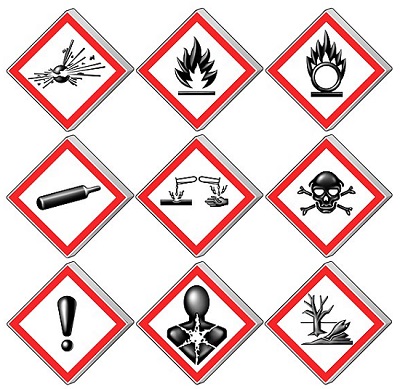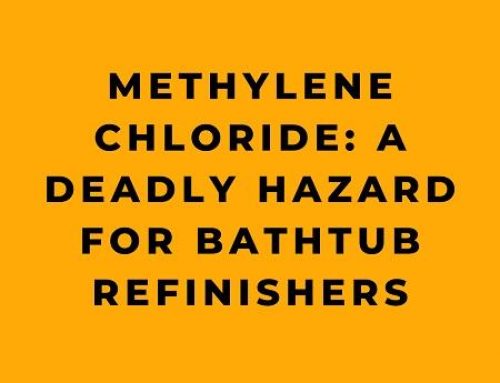Understanding GHS Hazard Signs: Importance, Guidelines, and Implementation for Your Business
Workplace safety should be a top priority for any business. Implementing clear hazard communication is crucial to help employees identify potential risks and handle materials properly. Globally Harmonized System (GHS) hazard signs play a key role in standardizing this communication worldwide. Learning about these signs, their meanings, and proper usage guidelines can ensure your business stays compliant and maintains the highest safety standards.
GHS Hazard Signs: The Basics
The key components of GHS hazard signs are pictograms, signal words, and hazard statements. These work together to alert users about chemical, physical, health, and environmental hazards. There are a total of nine pictograms under GHS that represent specific hazard categories. For physical dangers like explosives, flammables, and corrosives, there are distinct pictogram designs. Health hazards like carcinogens and respiratory sensitizers have their own pictograms too. Finally, pictograms indicating environmental hazards like aquatic toxicity help users identify risks to the environment.
In addition to pictograms, GHS hazard signs include signal words and hazard statements. Signal words like “Danger” or “Warning” indicate the severity level. Meanwhile, hazard statements describe the specific risk like “Causes skin irritation” or “May cause cancer”. Used together on labels and safety data sheets, these components provide immediate, clear insight into each hazard.
Importance of GHS Hazard Signs for Businesses
Implementing GHS hazard signs offers numerous benefits for workplaces. First and foremost, it improves hazard communication and helps ensure worker safety. Employees can easily identify risks before handling or working near dangerous materials. It also streamlines training as the same hazard signs are used globally across industries.
Additionally, utilizing GHS hazard signs helps businesses comply with Occupational Safety and Health Administration (OSHA) and other regulatory guidelines. In the United States, OSHA’s Hazard Communication Standard (HCS) legally requires chemical manufacturers, distributors, and importers to provide hazard information through labels and safety data sheets. Businesses that fail to comply face citations and penalties for not following proper hazard communication protocol. Having clear GHS labeling makes meeting these regulations straightforward.
Guidelines for Implementing GHS Hazard Signs
When incorporating GHS hazard signs, there are important guidelines to follow. Always place GHS labels on containers from chemicals arriving on-site. If transferring chemicals to secondary containers, include the relevant GHS information on new labels. Safety data sheets that list hazards, precautions, and emergency procedures should be readily accessible to employees as well.
Provide thorough training to ensure everyone understands the meanings of GHS pictograms, signal words, and hazard statements. Update information whenever new chemicals are introduced or supplier safety data sheets change. Also follow regulations from OSHA, state agencies, and local municipalities related to hazard communication. With the proper implementation tactics, GHS hazard signs can be seamlessly integrated into workplaces.
Understanding GHS Pictograms
The most recognizable part of any GHS hazard sign is the pictogram. The nine pictograms under the GHS system are:

Pictograms featuring all the Globally Harmonized System of Classification and Labeling of Chemicals.
- Flame pictogram: Indicates fire hazards like flammables and pyrophorics. Example chemicals include acetone and hydrogen gas.
- Flame over circle pictogram: Denotes oxidizers like ammonium nitrate that intensify fire and combustion.
- Gas cylinder pictogram: Signals gases under pressure such as ammonia and carbon dioxide.
- Corrosion pictogram: Represents skin or eye damage like corrosives, acids, and bases.
- Exploding bomb pictogram: Used for explosives, organic peroxides, and self-reacting chemicals.
- Skull and crossbones pictogram: Signifies acute toxicity risks from ingestion, skin contact, or inhalation.
- Health hazard pictogram: Indicates respiratory or skin sensitizers, carcinogens, and other long-term health dangers.
- Exclamation point pictogram: General warning of hazards not included in other pictogram categories.
- Environment pictogram: Used for hazards to aquatic life like chemicals toxic to fish.
The corresponding signal word, hazard statement, and precautionary measures should always accompany the GHS pictogram. This provides a full explanation of each hazard for improved comprehension.
GHS Hazard Signs in the Workplace
Within work environments, GHS hazard signs should be implemented strategically alongside other safety measures. On chemical containers, pictograms should be large and highly visible. Place signs in areas with the greatest exposure risks like chemical storage rooms or manufacturing equipment. Update signs promptly if chemicals change or hazards evolve.
For maximum visibility, post reminder signs with GHS pictograms and warnings near equipment handling hazardous substances. Integrate hazard communication into regular safety training sessions. Thorough education on hazard signs, safe handling tips, and proper precautions will improve awareness. Also provide ready access to safety data sheets and chemical inventories.
A comprehensive hazard communication program using GHS helps engrain workplace safety values. While following labeling guidelines is crucial, businesses should also promote ongoing open conversation about hazard awareness and risk reduction. When every employee understands GHS signs and their role in mitigating dangers, overall safety improves.
GHS hazard signs provide consistent, standardized communication about chemical, physical, health, and environmental hazards worldwide. Implementing these pictograms, signal words, and statements allows businesses to improve hazard identification, meet regulations, and keep workers safe. By utilizing best practices for label creation, employee training, and workplace integration, organizations can optimize their hazard communication with ease. With some education and commitment, GHS hazard signs become an invaluable component of a proactive safety program.
Sources:
-
- Office of Environmental Health and Safety: Know Your Hazard Symbols (Pictograms)
- OSHA: Facts on Aligning the Hazard Communication Standard to the GHS
- OSHA: Hazard Communication Standard: Labels and Pictograms
- reach-compliance.ch: The GHS hazard pictograms for free download
- OSHA: Hazard Communication – Globally Harmonized System
- OSHA.com: GHS Hazard Sign, Symbol & Pictogram Meanings
- Canadian Centre for Occupational Health and Safety: CCOHS: Globally Harmonized System (GHS)
- OSHA: Hazard Communication – Overview
- MedSolut AG: All Hazard Symbols & Meaning
- BRADY: GHS Hazard Statements – List, Codes & Implementation
- OSHA: Hazard Communication Standard Pictogram
- Creative Safety Supply: Why is GHS necessary and important?
- UArizona Research, Innovation & Impact: Reference Guide to GHS Hierarchy
- PHMSA: Global Harmonization of Hazard Classification and Labeling Systems
- Wikipedia: GHS hazard pictograms
- Accuform: Everything You Wanted to Know About GHS
- Image Reference for GHS Labels









